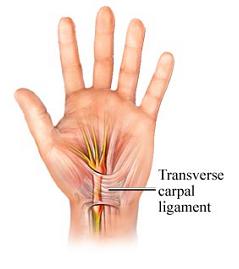 Researchers from Catholic University in Washington, DC searched the literature for treatments of carpal tunnel syndrome.
Researchers from Catholic University in Washington, DC searched the literature for treatments of carpal tunnel syndrome.
33 published studies were reviewed.
There is?
- Strong evidence (level I) for the effectiveness of local and oral steroids.
- Moderate evidence (level II) that splints are effective.
- Moderate evidence (level II) that vitamin B6 is ineffective.
- Limited or conflicting evidence (level III) that nonsteroidal anti-inflammatory drugs (NSAIDs), diuretics, yoga, laser and ultrasound are effective.
- Limited or conflicting evidence (level III) that exercise therapy and botulinum toxin B injection are ineffective.
For future reference, here’s the U.S. Preventive Services Task Force system for ranking evidence about the effectiveness of treatments.
- Level I: Evidence obtained from at least one properly designed randomized controlled trial.
- Level II-1: Evidence obtained from well-designed controlled trials without randomization.
- Level II-2: Evidence obtained from well-designed cohort or case-control analytic studies, preferably from more than one center or research group.
- Level II-3: Evidence obtained from multiple time series with or without the intervention. Dramatic results in uncontrolled trials might also be regarded as this type of evidence.
- Level III: Opinions of respected authorities, based on clinical experience, descriptive studies, or reports of expert committees.
7/7/07